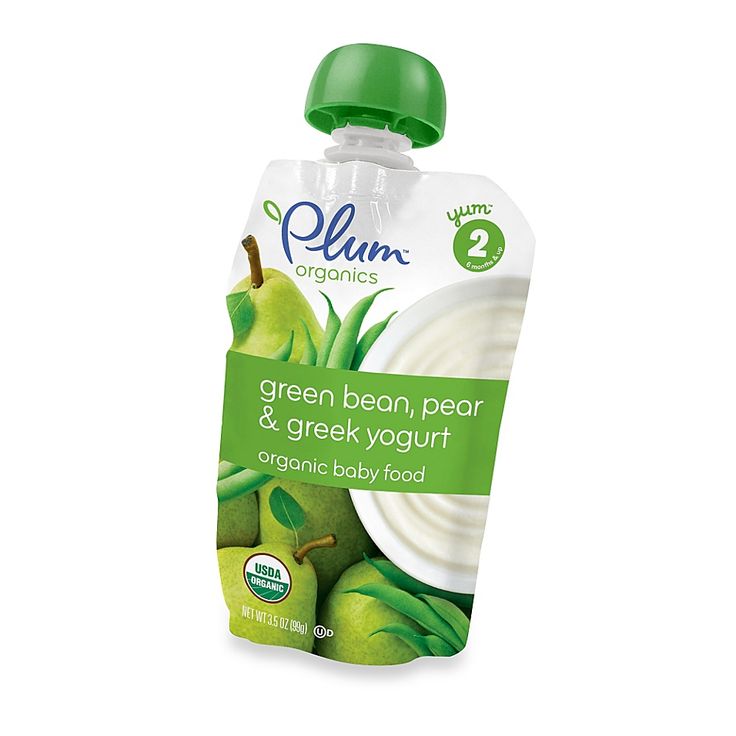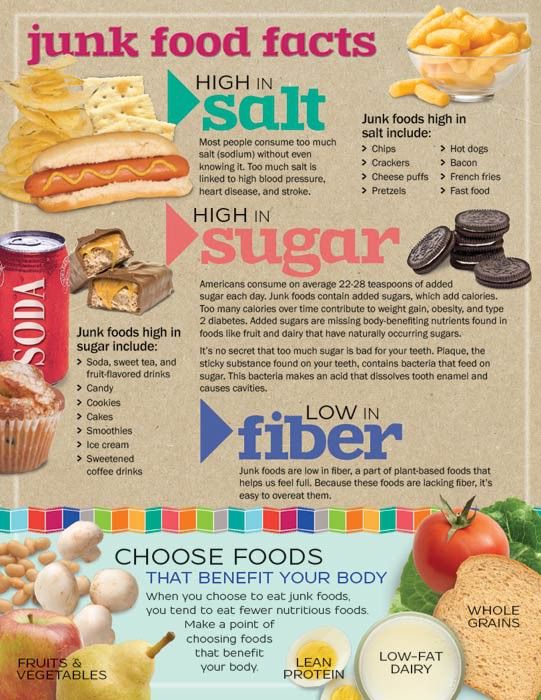How small to cut baby finger food
How to Cut Foods for Baby-Led Weaning
You’ve probably seen photos online of babies practicing baby-led weaning, chomping down on a whole carrot or grasping raw apple slices. But, is this safe?
In the case of the raw carrot and apples, nope. But, baby-led weaning certainly can be safe, if you know how to cut and cook foods properly.
Baby-led weaning, or baby-led feeding as I prefer to call it, means that babies feed themselves finger foods as soon as they start solids. But it isn’t anything goes. Here’s how to make sure that the foods you give your baby are safe and easy-to-eat for your baby’s developmental capabilities. Because if your baby can’t pick up the food, then she can’t actually eat it!
And these guidelines work for any finger foods, even if your baby is still eating some purées (which is just fine, by the way!).
Size and Shape
At around 6 months — Most babies just starting solids haven’t developed their pincer grasp (thumb and forefinger) yet. So to pick up foods they grasp them with their whole palm. Since you want your baby to still access the food while it’s in her palm, it’s best to cut food into long, thin sticks. Think about the length and width of your pinky finger, and check out the photo above from Baby-Led Feeding for some ideas.
Other than choking hazards and honey (which you should never give to a baby under age 1), most foods are fair game at this age, including meat, poultry, cheese (shredded), and allergens like eggs, nuts (never whole, but a little smooth nut butter stirred into a purée or spread on toast), and fish.
Toasts are another excellent vehicle for introducing new foods and flavors. Because while we don’t want foods to be too hard (see below), we also don’t want them to be too soft and gummy. Commercial bread can be difficult to pick up and can turn into a ball of mush in a baby’s mouth. But, lightly toasted bread is ideal for self-feeding. Here are 15 of my favorite toast toppings for babies.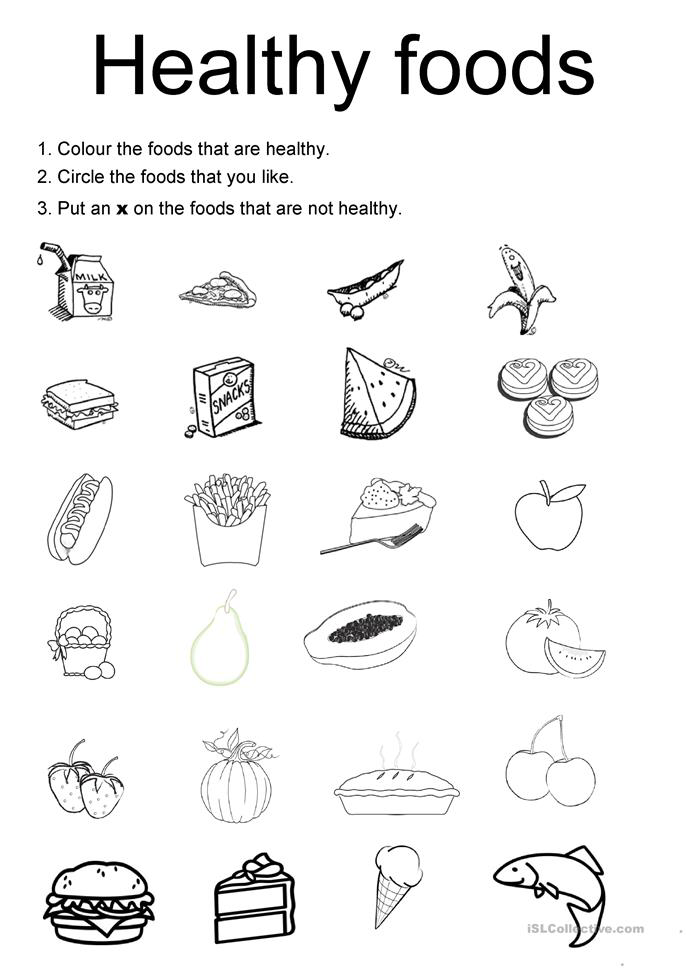
And remember that much of eating at this early stage is about your baby exploring–touching, smelling, and yes, tasting. But don’t be alarmed if it seems like little of the food is actually making it into her tummy. Self-feeding takes a lot of eye-hand coordination, and that’s an ability your baby is still developing.
At around 8-10 months — When babies develop their pincer grasp start cutting foods into small pieces, about chickpea-sized. And for small round foods like chickpeas or blueberries, smash them lightly before serving. It’s great for babies at this age to practice their pincer grasp, but it’s also A-OK to continue serving food in sticks like you did when he was younger. The photo above is also from Baby-Led Feeding.
Some of my other favorite single-ingredient foods at this stage include chopped hard-cooked eggs and small pasta shapes.
This is also a good time to begin offering your baby a spoon along with thick soups or mashes. It will take practice for her to get the hang of eating with the spoon, but you can pre-load the utensil to start, and of course, practice makes perfect.
It will take practice for her to get the hang of eating with the spoon, but you can pre-load the utensil to start, and of course, practice makes perfect.
Texture
At all ages, foods should be soft enough that you can smash them with gentle pressure between your thumb and forefinger. This means no raw carrots, apples, nuts, or tough chunks of meat. For vegetables, this usually means steaming them, roasting them, or cooking them in an Instant Pot. Meat should also be very, very tender. Here’s my guide to cooking meat for babies.
Remember, to err on the side of caution with baby-led feeding and always stay with your baby while she’s eating. Then enjoy the show!
Looking for more baby-led weaning ideas and family feeding tips? Sign up for my newsletter! As a thank you, I’ll send you three of my favorite healthy smoothie recipes for the whole family. I look forward to being in touch!
Photos by Lauren Volo.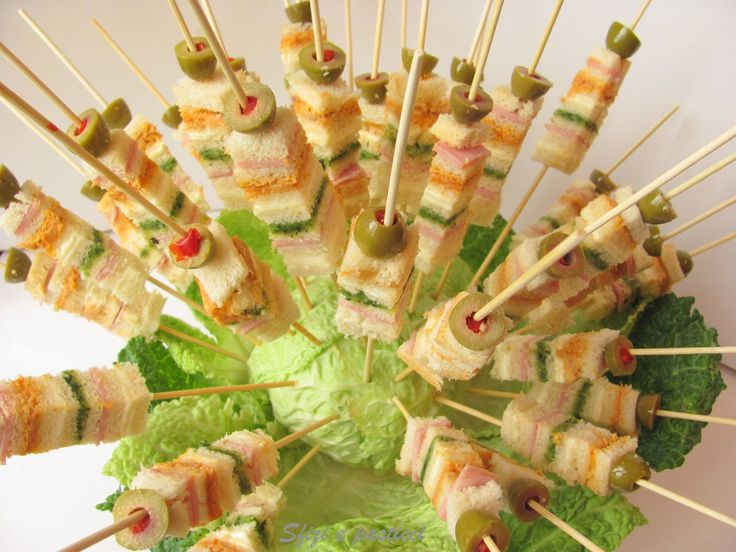
Jenna Helwig
[email protected]How to Cut Food for Babies and Toddlers
It’s possible to make it easier for kids to eat the food we offer them simply by making sure it’s cut into appropriate sizes. This can help reduce frustration, picky eating, and food waste—and the potential for choking risks. This post has all of my best tips for how to cut food for babies and toddlers!
How to Cut Food for Babies and Toddlers
Food can be slippery and hard to pick up. It can be chewy, tough, sticky, or a whole host of other textures. It can help to greatly reduce frustration at mealtimes if you consider a few basic tips when cutting food for kids. The principals of this are really straight forward, but I’m going to share a lot of visuals since I know the real life practice of this can get confusing!
How to cut food for little kids changes as they progress through the stages of learning to eat, so remember that this is a process.
Your toddler won’t eat? Help is here!
Sign up for our email updates to get tips and ideas sent to your inbox.
Please enable JavaScript in your browser to complete this form.Email *
Comment
How to Cut Food for Baby Led Weaning
If you’re starting solids with the Baby Led Weaning style, you’ll want to make sure that the food is soft (it should easily squish between your fingers) and be cut at least the size of your finger. This will help ensure that baby can easily pick it up, yet be unable to put the entire piece into her mouth.
TIP: Find my Ultimate Guide to Baby Led Weaning here.
Tips for Cutting Up Finger Foods for Babies
When babies are about 9 months old, they develop the “pincer grasp”, or the ability to pick up smaller pieces between two fingers. At this age, you can start to serve very soft, squishable finger foods that are about the size of a pea or two.
TIP: Find my full list of Early Finger Foods for Babies here.
How to Serve Raw Veggies to Toddlers
Offering raw veggies to kids can be challenging since many are hard and take a lot of work to chew. And big chunks of raw veggies like carrots can be choking hazards. To stay safe and give the kids a chance to practice with the new textures, try:
- 12/14 months: Start with shredded raw veggies like carrots, cucumbers, bell pepper, and lettuce. (You can soften the carrots for a few minutes in very hot water if desired.)
- 16/18 months: Proceed to very, very thin slices (paper thin!).
- 20/24 months: Gradually offer slightly thicker pieces around, but they should still be thin and less than 1/4-inch thick.
- 2 years: Try offering small diced pieces of bell pepper and cucumber, though some kids may still do better with larger, thin pieces.
- 4+ years: Kids may be able to safely chew a big piece of raw carrot or a whole baby carrot.
 (This is a really tough texture, so try to avoid it for a while.)
(This is a really tough texture, so try to avoid it for a while.)
How to Cut Sandwiches for Kids
Bread can be a challenging texture for kids, especially when there are other textures in the middle of a sandwich. Progressing through a few phases can make this easier and help avoid frustration.
- 6+ month: Serve lightly toasted finger-size or larger pieces of bread for baby to gnaw on.
- 9+ months: Dice bread into very small pieces. Moisten it with apple butter, baby food puree, or another moist spread as needed to help baby move it around in their mouths.
- 14/16 months: Stick pieces are great for this age to help kids practice taking bites.
- 20/22 months: Sandwich quarters are a great size for one year olds and are a nice size for little hands to hold.
TIP: Find my favorite Kid’s Sandwiches here.
How to Serve Apples to Babies and Toddlers
Start with applesauce and Roasted Apples for babies, then shredded apple to thin matchsticks to very thin slices through the one year old year.
How to Serve Bananas to Babies and Toddlers
Start with a BLW-style banana (leave a little of the skin on to act as a less slippery handle) and Banana Puree, then move to small pieces around 9 months, and larger pieces around 16 months. Kids may also be able to bite whole bananas after 12 months since they are so soft.
How to Serve Broccoli to Babies and Toddlers
Start with Mashed Potatoes with Broccoli or a big BLW-style piece, then move to smaller very tender pieces around 9 months, and gradually increase the size through the one year old year.
With all of these, you want the florets to be very soft so they are easy to chew.
Fork making “bite marks” in pearHow to Help Kids Learn to Take Bites
It’s common for one year olds to stuff a lot of food into their mouths at once, so we sometimes need to be very deliberate about teaching them to take bites. You can use a fork to make a “bite mark” so they can see where to try to put their teeth. You can also give them larger pieces of food that they physically wouldn’t be able to fit into their mouths so they sort of have to take a bite.
Sit with the kids during meals, if you can, and show them how you take bites. This is a normal phase and kids usually get the hang of it if we give them time to learn and practice.
Try cutting foods in new ways to keep thing interesting.Best Tips for Cutting Food for Kids
- Start with finger-size pieces at 6+ months for baby led weaning.
- Transition to pea (or two peas) size pieces around 9 months when kids can pick up smaller pieces between their fingers.
- Offer larger pieces so they can practice taking bites around 16/18 months.
- For raw veggies and hard fruits (like apples), start with shreds, then matchsticks, and paper thin pieces.
- Save baby carrots and other very hard raw veggies until age 4+.
- Find my favorite baby First Finger Foods.
- Find my go-to toddler Finger Foods.
- Learn more about Serving Nuts to Kids.
- Brush up on the common choking hazards and how to reduce the risk.
Related Recipes
I’d love to know if you have any questions on this or feedback, so please comment below!
This post was first published March 2021.
Baby food - from a jar or with your own hands? Pros and cons
Complementary foods are solid foods for young children in addition to dairy products that they have received for several months as their sole source of nutrition.
— Polina Alexandrovna, why is the introduction of complementary foods called a transitional stage in a child's nutrition?
— The beginning of acquaintance with complementary foods does not mean the transition to an adult table. The first or second complementary foods are important so that the child adapts and is psychologically ready to eat adult food, and his digestive organs are tuned to work properly. Therefore, complementary foods are considered a transitional stage from milk nutrition to nutrition at a common table.
- Is the composition of canned zucchini or apple puree for babies different from the homemade version?
- Factory nutrition may vary depending on the raw materials that the manufacturer uses in a particular puree. Therefore, it is impossible to say that all such food is the same. For example, zucchini puree may contain rice flour so that its consistency is more correct in the opinion of the manufacturer. Mom decides what to put in, and in the same way she can add rice flour. An industrial puree that is suitable for a child and meets the requirements of parents may be identical in composition to homemade puree.
Therefore, it is impossible to say that all such food is the same. For example, zucchini puree may contain rice flour so that its consistency is more correct in the opinion of the manufacturer. Mom decides what to put in, and in the same way she can add rice flour. An industrial puree that is suitable for a child and meets the requirements of parents may be identical in composition to homemade puree.
— There is a lot of speculation about baby food in jars. What are the most common parenting misconceptions?
- The most common myth is "canned mashed potatoes don't taste good and kids don't eat them well." In fact, most babies enjoy eating factory-made purees without experiencing any problems.
There are concerns that baby puree is “wrong” or does not meet nutritional requirements. The manufacturer is required by law to list all the ingredients of the product. For example, mashed potatoes may contain rice flour that is not always healthy, especially if vegetables are introduced to the child in order to avoid constipation. What kind of food is more useful for the baby, whether to buy just such a puree or look for another in composition - the parents decide together with the doctor. Therefore, it is wrong to equate all manufacturers and their products.
What kind of food is more useful for the baby, whether to buy just such a puree or look for another in composition - the parents decide together with the doctor. Therefore, it is wrong to equate all manufacturers and their products.
See also
- "10 myths about canned baby food"
- Puree is often said to contain preservatives.
— Modern technologies make it possible not to use preservatives in the production of baby food. That is why it is written on the jars that open food is not stored for more than a day even in the refrigerator. As long as puree does not come into contact with air, it does not spoil within the specified shelf life due to sterilization and vacuum packaging. After opening the jar and contact with air, the puree quickly deteriorates, which indicates the absence of preservatives in it.
— Is it true that canned baby food is addictive, and then the child refuses natural products?
- There is no causal relationship here. When a child refuses a fresh apple, the problem is not the canned puree in his diet, but that he is not familiar with food in pieces. The child ate a homogeneous puree for a long time, and then they offer him a large piece of an apple - naturally, he will not cope with it right away. That is why, after the child gets used to a homogeneous puree, puree with soft small pieces is gradually introduced - so that there is no discomfort if the baby does not chew them. Gradually, the pieces become larger and denser. Over time, the child comes to eat a real whole apple or other hard fruit or vegetable.
When a child refuses a fresh apple, the problem is not the canned puree in his diet, but that he is not familiar with food in pieces. The child ate a homogeneous puree for a long time, and then they offer him a large piece of an apple - naturally, he will not cope with it right away. That is why, after the child gets used to a homogeneous puree, puree with soft small pieces is gradually introduced - so that there is no discomfort if the baby does not chew them. Gradually, the pieces become larger and denser. Over time, the child comes to eat a real whole apple or other hard fruit or vegetable.
Baby food in a jar or homemade puree - which is right for a baby? Pros and cons of
— How long can I feed my baby bottled baby food?
- You can feed your baby as much as you like, there is no strict age limit. But baby needs to be introduced to the different textures and flavors of . The need for canned food usually disappears when the baby moves to a common table with a diet familiar to the whole family. During this period, puree from a jar, especially tasty and sweet fruit varieties, often becomes a safe treat for grown-up babies.
During this period, puree from a jar, especially tasty and sweet fruit varieties, often becomes a safe treat for grown-up babies.
— In which cases canned baby puree is contraindicated?
- There are no diseases in which canned puree is contraindicated. But for some diseases, the presence of a particular product in baby food is undesirable. Factory puree is different in composition. Parents can choose purees without ingredients that are not suitable for the baby or should be limited in his diet, and continue to feed the canned product without problems.
— How to choose baby food in a jar that is healthy for a child?
- First of all, you need to read the full composition of the product on the back, because some ingredients are not indicated on the front label of the jar. It is important to pay attention to the expiration date of the food, the reputation of the manufacturer. All components of the puree must correspond to the age and condition of the child, his individual characteristics.
For example:
- the first puree must not contain rice flour;
- Strawberry puree should not be given to a four-month-old child;
- cereals are excluded from the diet of children with celiac disease (gluten intolerance);
- An older baby should be offered puree with chunks.
MAMAKO
® fruit puree with goat curd pleases the baby with a delicate taste, and the mother with a simple and understandable composition! The plant, which produces MAMAKO ® fruit puree with goat curd, has successfully passed an international audit and received a TUV certificate, which confirms the quality and safety of products.
What mistakes do parents make when preparing mashed potatoes for feeding with their own hands
- Sometimes parents cook the wrong way - sometimes they overcook vegetables, and also make the puree too thin or thick. I hope that no one will fry food for their young children instead of boiling or steaming. Sometimes parents put spices and salt in baby puree, which is also not worth doing. The child should initially get acquainted with pure tastes, and extraneous additives are useless.
I hope that no one will fry food for their young children instead of boiling or steaming. Sometimes parents put spices and salt in baby puree, which is also not worth doing. The child should initially get acquainted with pure tastes, and extraneous additives are useless.
In addition, mothers need to be guided by foods that are appropriate for the age of the child, do not cause allergies and are not difficult for him, and also be guided by what the family eats. If parents give the baby something that they themselves do not eat, then when switching to an adult table, he may refuse the usual family food, he will have to cook it separately. This will be a big problem.
- The child refuses the food prepared by the mother and does not eat anything. What to do in such a situation?
— The same food or dish can be offered to the child during the week. Food selectivity in children often depends on taste sensations, but a child may refuse to eat for other reasons, for example, when he is not hungry or would like to play instead of dinner. If during the week the child does not perceive the product that the mother offers, perhaps he still does not like it. In this case, the same product can be given in the form of canned nutrition . Often, kids really refuse homemade puree, preferring the factory version. Again, mom can cook another product and give, for example, broccoli instead of zucchini, which the child will appreciate.
If during the week the child does not perceive the product that the mother offers, perhaps he still does not like it. In this case, the same product can be given in the form of canned nutrition . Often, kids really refuse homemade puree, preferring the factory version. Again, mom can cook another product and give, for example, broccoli instead of zucchini, which the child will appreciate.
Fruit puree MAMAKO ® contains 20% goat curd. This food option is convenient at the stage of introducing children not only to fruits, but also to dairy products. It is the little ones who eat sweet, tasty foods well during the first feeding period and even when they get older - for dessert.
- Are the recipes for complementary foods from 6 months and those for 10 months different?
- For toddlers, there are no recipes and complex dishes, because it is a simple food for discovering pure tastes without salt and spices, gradually getting used to the texture of the products. In the preparation of the first children's dishes, you can vary the combination of vegetables, focusing on the taste of the baby.
In the preparation of the first children's dishes, you can vary the combination of vegetables, focusing on the taste of the baby.
Recipes appear from the age of two or three with a full transition to the common table, when family preferences become more important. Of course, the baby needs to be introduced to products that are not consumed in the family, because there is a kindergarten and a school ahead. However, the basis of his diet should be food from the general household table . In addition, parents should be careful in cooking: do not overcook foods, do not add artificial ingredients, properly cool food so that homemade vegetable or fruit puree for the first feeding is healthy and safe for the baby.
- Is it possible to combine canned and homemade food and in what proportions?
— There are no strict rules: what is convenient for the family is chosen. For example, it is difficult to make meat puree at home, so sometimes parents add industrial meat supplements to homemade vegetable puree.
There is also no clear gradation in the percentage of different food options. In one plate, you can mix what you have prepared yourself with what you bought in the store. But at home it is not always possible to achieve the desired combinations and prepare, for example, a combined product that includes a variety of fruits and cottage cheese.
Choose a way of eating that is comfortable for your family. It is easier for someone to cook for their child on their own, for someone it is easier to buy ready-made mashed potatoes. Pediatricians often recommend mashed vegetables or fruits of industrial production, because when it is used for a child, the risk of undesirable consequences is much less.
* Breast milk is the best food for babies. WHO recommends exclusive breastfeeding for the first 6 months of a child's life and continued breastfeeding after complementary foods are introduced until the age of 2 years. Before introducing new products into the baby's diet, you should consult with a specialist. The material is for informational purposes and cannot replace the advice of a healthcare professional. For feeding children from birth.
The material is for informational purposes and cannot replace the advice of a healthcare professional. For feeding children from birth.
Baby food at home: recipes, video
Growing up a little person is a delightful process that cannot but please the parents of the crumbs. However, the first feeling that mom and dad face when it comes time to introduce complementary foods into a child's diet is confusion.
Which food is the most healthy, hypoallergenic and delicious? Most often, the first "real" meal of the crumbs after mother's milk and formula is vegetable or fruit puree. The choice of baby food on store shelves is very wide - each manufacturer tries to convince the buyer that jars with beautiful labels contain only natural products, there are no dyes, sweeteners and other harmful additives. A variety of "meals" for babies in factory packaging marked "3+ months." does not guarantee the true usefulness of the product that is inside. Every mother understands that complementary foods prepared on her own, from natural products, are much better for her child.
Another advantage of making your own baby food is that you can choose the best ingredients, wash fruits, berries or vegetables thoroughly, peel them well and remove damaged parts. In addition, the parents of the crumbs themselves can choose the way - how best to cook baby food: food can not only be boiled, but also baked in the oven or cooked in a double boiler.
It is also important that home-made baby puree is much tastier, it will undoubtedly be useful for a growing body and will not cause allergies! Even the simplest children's dish, prepared by mom, keeps the warmth of caring hands and cannot be compared with expensive dishes from the store.
What should be the correct complementary foods for children? Of course, you should start with one ingredient (such purees are called one-component purees), then move on to more complex options. Experts emphasize that the most suitable product for the first "dish" is zucchini. Cauliflower can also be considered neutral.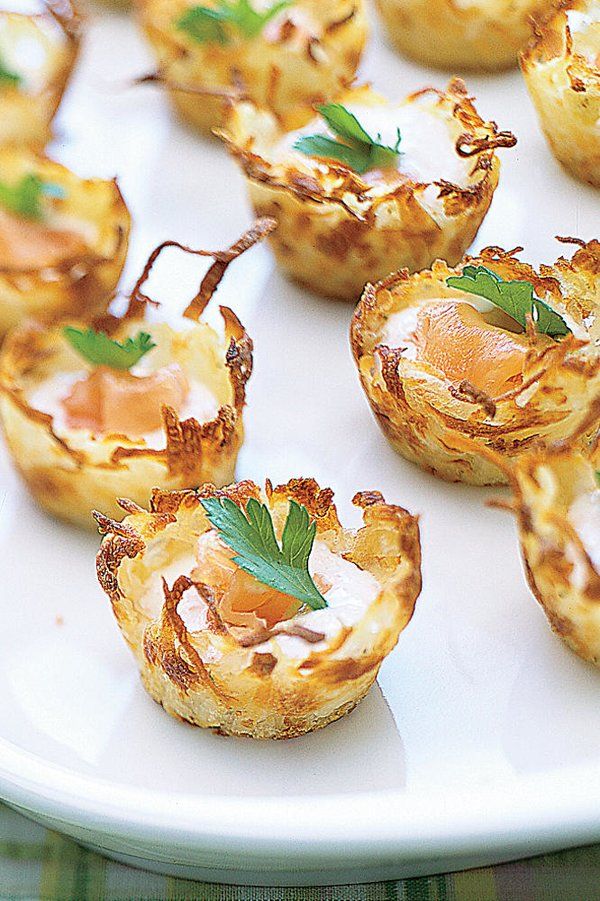 Gradually it will be possible to introduce carrots, pumpkins, potatoes, broccoli and green peas. At the first stage of the introduction of complementary foods, it is better to give preference to vegetable purees and switch to fruit purees when the child already treats “serious” food well.
Gradually it will be possible to introduce carrots, pumpkins, potatoes, broccoli and green peas. At the first stage of the introduction of complementary foods, it is better to give preference to vegetable purees and switch to fruit purees when the child already treats “serious” food well.
The basic rules and principles of preparing high-quality baby food yourself:
- it is best to take fresh products for preparations: fruits from the tree, berries from the bush and vegetables from the garden are much more useful than those that have already been in the refrigerator for a week. If there are no seasonal vegetables at the time of preparation, the use of frozen foods is acceptable, but in this case, try to give preference to whole fruits - they retain the greatest amount of nutrients;
- only filtered water should be used for cooking vegetables;
- Preparing baby food requires, if not separate dishes, then thoroughly washed ones. Do not, for example, cut vegetables on a meat board.
 If there is a dog or cat in the house, then you need to restrict her access to the kitchen when food is being prepared;
If there is a dog or cat in the house, then you need to restrict her access to the kitchen when food is being prepared; - It is not recommended to use vegetables and fruits in the diet of infants, in which the content of chemical additives is consistently high. These often include watermelons and melons, beets, spinach and lettuce;
- It is better to pour water on vegetables purchased on the market before cooking: put carrots, potatoes, zucchini and cauliflower in filtered water for a couple of hours - this will remove nitrates;
- do not leave excess mashed potatoes for the next meal: the child should be given only freshly prepared food, and "yesterday's" mashed potatoes are best eaten by adults or given to pets;
- you can choose cream, boiled egg yolk, grated cheese or finely chopped dill as an additive to puree - this will diversify dishes for children from 8 months;
- try it! Children's food can and should be enjoyed by an adult.
There is another question that often worries parents: is it permissible to preserve baby puree and how to do it correctly? After all, such complementary foods for the developing body of a small child must be prepared daily for one or even two or three years: until the baby is ready to eat adult food from the common table. Not every mother has the time and opportunity to prepare baby puree daily, but you don’t want to buy food for the baby in the store. In addition, it is obvious that in the winter-spring period it is almost impossible to find fruits and vegetables grown without the addition of chemicals. The answer to the question is quite simple: the requirements for the conditions for preparing baby food are very strict (keeping the temperature, sterilizing jars, etc.), but using an autoclave solves all problems: all that is required is to load jars with blanks into the autoclave for 20 minutes and set temperature 120 degrees. After cooling, it is better to store baby food in a dark, cool place for about 12 months, daily delighting the child with homemade homemade food.
Not every mother has the time and opportunity to prepare baby puree daily, but you don’t want to buy food for the baby in the store. In addition, it is obvious that in the winter-spring period it is almost impossible to find fruits and vegetables grown without the addition of chemicals. The answer to the question is quite simple: the requirements for the conditions for preparing baby food are very strict (keeping the temperature, sterilizing jars, etc.), but using an autoclave solves all problems: all that is required is to load jars with blanks into the autoclave for 20 minutes and set temperature 120 degrees. After cooling, it is better to store baby food in a dark, cool place for about 12 months, daily delighting the child with homemade homemade food.
Pumpkin puree: delicate and aromatic
Pumpkin is a delicious vegetable that is good for babies. This fruit has a beneficial effect on digestion, is well absorbed by the child's body and is rich in various vitamins: A, C, B, B2, E, PP, T. In addition, the carotene content in pumpkin is 5 times higher than in carrots!
In addition, the carotene content in pumpkin is 5 times higher than in carrots!
Baby pumpkin puree has a sweet taste, so the kids eat this dish with great pleasure. For preparations, it is better to buy small whole pumpkins, as they usually taste better than large ones and are easier to peel.
- Rinse pumpkin well under running water, peel, cut in half, remove seeds.
- Then you need to cut the fruit into small cubes, put in a saucepan and pour water. Cooking time after boiling - 20 minutes. You can also steam pumpkin: it will retain more nutrients with the same cooking time.
- The next step is to beat the cooked pumpkin with a blender until the consistency of a gentle puree. If the dish turned out to be thick, add water or milk (milk mixture).
- Vegetable oil and salt are added to pumpkin puree to taste, but these additives should be used with caution: only if they are acceptable for the age of the child.
For babies older than 8 months, pumpkin puree is supplemented with other fruits and vegetables, and also added to porridge.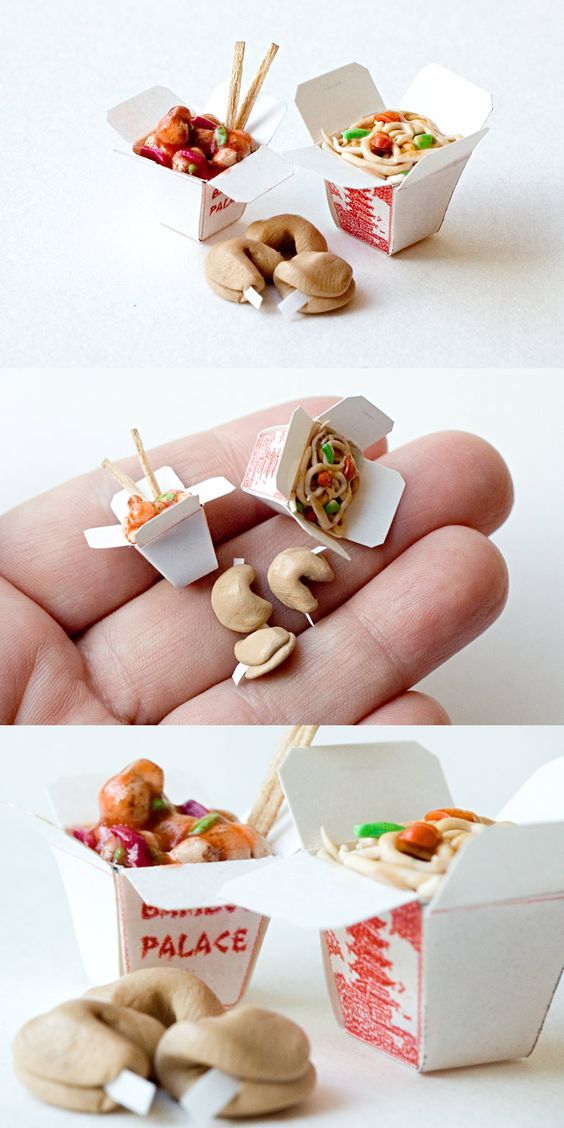
Broccoli puree: simplicity and elegance
Broccoli is not just cabbage, but a storehouse of vitamins and microelements! Beautiful on the outside and fantastic on the inside - the high content of protein and vitamin C (there is more in broccoli than in citrus!) deserves special attention. There are many articles on the Internet about the benefits of broccoli, and preparing this product is not at all difficult.
To prepare this type of cabbage for baby food, you need to choose the highest quality product: the inflorescences must be unopened, green, moderately elastic.
- Broccoli should be washed, cut into pieces and boiled. Steaming will take 20 minutes, in water - faster: fresh cabbage should be boiled for a little more than 5 minutes, and frozen - at least 10. When cooking, do not pour a lot of water, it should only cover the vegetables a little.
- When the cabbage is cooked, it must be taken out, put into a blender bowl and chopped to a puree state, add a little warm boiled water.

- Add salt and butter to taste.
Pear puree: a fragrant dessert
It's no secret that babies love fruit puree - almost all children like sweet dishes. The pear is a suitable option for the first one-component fruit food - a sweet fragrant fruit that has a high concentration of vitamins, stimulates digestion and almost never causes allergies.
If you want to cook a safe puree for your child at home, then it is best to choose green pears, these are the fruits that are considered to be the least allergenic.
- Fruit must be peeled, core removed with seeds, cut into cubes.
- Transfer the pear to a heavy-bottomed enamel saucepan, add a little water and simmer for 15-20 minutes over low heat.
- Then transfer to a blender bowl and puree until smooth. If the puree is too thick, add a little warm boiled water.
- You can dilute the dish with milk or formula - it depends on the taste preferences of the baby.
The same recipe is used for applesauce. In the future, try to combine these two fruits in one dish.
In the future, try to combine these two fruits in one dish.
Classic apple-zucchini puree
A good appetite of a baby pleases every mother, but little gourmets are often capricious, and it is not easy to please them. Zucchini and apple puree is a classic combination of products that will diversify the baby's menu already in the fifth or sixth month of life.
This complementary food contains only hypoallergenic products, has a positive effect on the functioning of the heart, and stimulates the strengthening of the immune system.
- Selected products should be thoroughly washed, peeled, core removed from apples.
- Cut zucchini and apples into cubes, put fruits in a cooking pot first - they should cook for 5 minutes longer, and then vegetables. The total cooking time is 20 minutes.
- When the food becomes soft, it must be crushed to a puree with a blender.
- To taste - dilute with water, add salt, oil.
This puree can be considered an independent dish for the little ones or become a delicious side dish for older kids.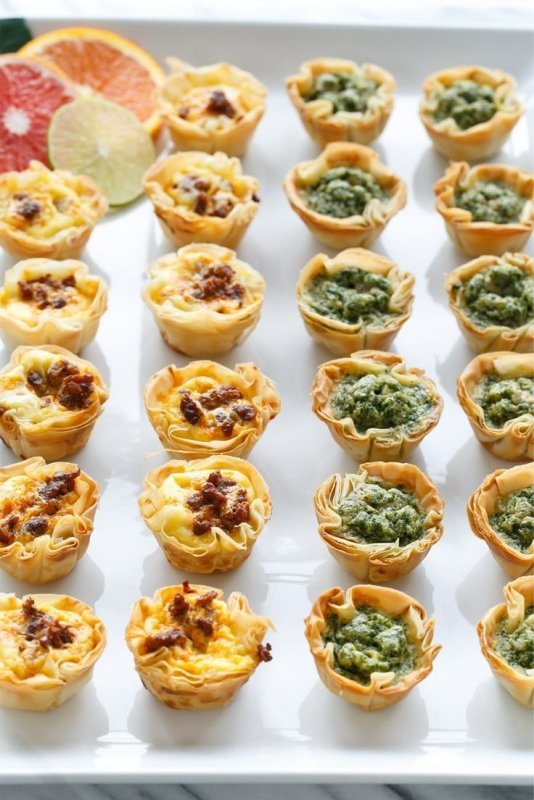
Colorful carrot and potato puree
For many parents, carrots and potatoes are the easiest and most understandable type of complementary food for the baby. However, if you cook and serve standard products a little differently than usual, you can improve the traditional taste of a classic dish.
Young potatoes should not be chosen for baby puree - they contain a lot of starch. Carrots, on the contrary, it is better to buy young ones.
- Wash and peel the vegetables thoroughly and cut into cubes.
- It is better to steam the carrot-potato puree, the vegetables should be boiled separately. Cook until tender, 20 minutes on average.
- Separately puree the vegetables in a blender, diluting with warm water if necessary.
Both types of puree are beautifully placed on a plate without mixing: the child can decide for himself whether to mix food or eat separately.
Exotic variety: mango puree
Tropical fruits should not be offered to a small child before 7-8 months and only if there was no allergy to other foods.
Mango is an aromatic fruit with an original pleasant taste. This fruit helps to overcome colds, reduce inflammation in the body, improve sleep and normalize the functioning of the stomach.
To feed the baby, ripened fruits should be selected - quite soft, yellow-red in color.
- Fruit should be peeled and pitted, cut into cubes.
- Put the raw mango in a blender, purée, transfer to a heavy-bottomed pot and boil for a few minutes.
Older children may be offered uncooked mango puree. This fruit is completely independent - no need to add sugar or water!
Sweet pumpkin puree with apple
This puree is called sweet, as both pumpkin and apples are foods with sufficient sugar content. Such a dish is well suited as a dessert for children who already eat “serious” food well - vegetable purees and cereals.
In addition, such complementary foods are a great option for the autumn-winter period: seasonal products contain enough choline, a lot of fiber, natural proteins and vitamins (groups A, B, C, E, etc.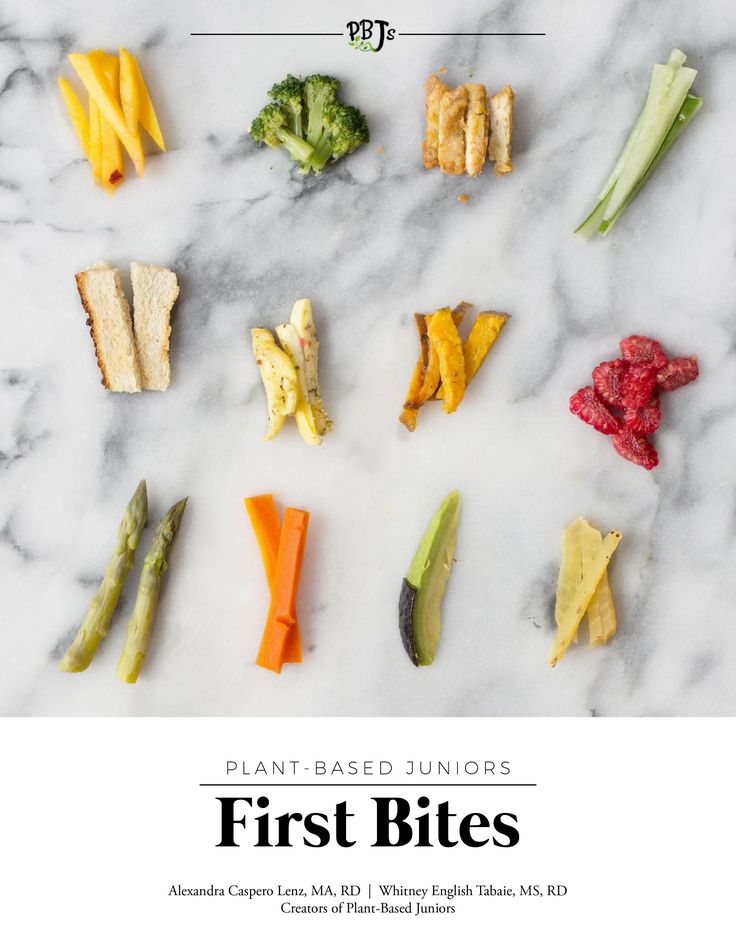 ), zinc, sodium, calcium and only!
), zinc, sodium, calcium and only!
- Pumpkins and apples need to be peeled, peeled and seeds removed, cut into cubes and sent to a double boiler.
- Cook for about 20 minutes until the food is soft. Then place them in a blender bowl, add raisins and chop. If the child chews well, mash everything with a fork, and leave the raisins whole.
Hearty puree with celery and turkey
For older kids, meat is added to vegetable dishes - turkey fillet is an excellent option for developing a child's taste preferences. Appetizing and fragrant meat puree includes only three ingredients: celery root, turkey fillet, butter.
The proportion of meat and celery should be approximately 10:1, the amount of butter to your taste.
- The turkey fillet must be boiled in the "second stock" for about 20 minutes after boiling.
- Wash, peel and cut the celery root into cubes and put into the boiling broth 10 minutes before it is done.







